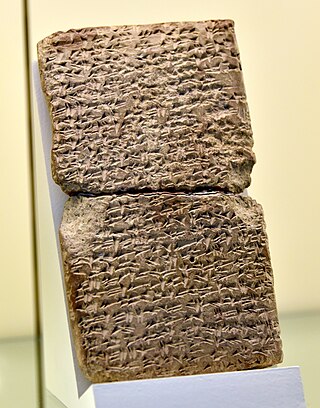Top Qs
Timeline
Chat
Perspective
Kur (cuneiform)
Cuneiform sign From Wikipedia, the free encyclopedia
Remove ads
The cuneiform kur sign, (in cuneiform: 𒆳; as Sumerogram, KUR), has many uses in both the 14th century BC Amarna letters and the Epic of Gilgamesh. It is routinely and commonly used to spell the Akkadian language word "mātu", for "land", "country"; also possibly "region".[1] In EA 288, a letter from the Abdi-Heba, the Governor of Jerusalem, the kur sign is used eight times.
This article relies largely or entirely on a single source. (July 2021) |


Usage in Lines 35, 36, 50, 53, and 55; text reads left-to-right.
(very high resolution, expandible photo)
Wikimedia Commons has media related to Kur (cuneiform).
The alphabetic/syllabic uses and Sumerograms of the 'kur' sign from the Epic of Gilgamesh:[2]
- gìn
- kur
- lat
- laț
- mad
- mat
- šad
- šat
- GÌN (Sumerogram)s
- KUR
- MAD
Its usage numbers from the Epic of Gilgamesh are as follows:[3] gìn-(1), kur-(5), lat-(18), laț-(1), mad-(2), mat-(52), šad-(6), šat-(13),PA-(11), pa-(209), GÌN-(10), KUR-(72), MAD-(5). In the Amarna letters, an example usage is from EA 288 (Reverse), l. 35, defeated LAND-(kur) Nahrima.
Remove ads
References
Wikiwand - on
Seamless Wikipedia browsing. On steroids.
Remove ads
